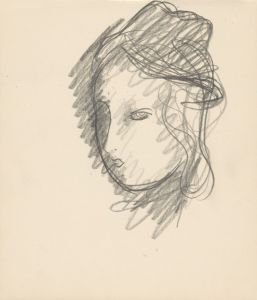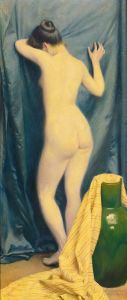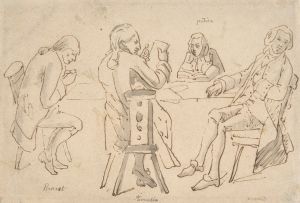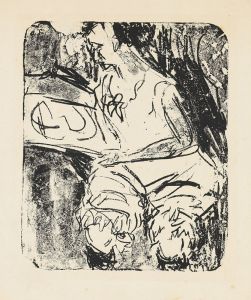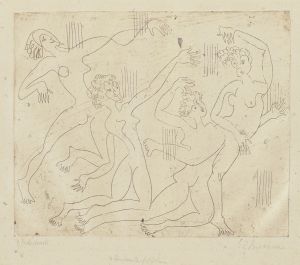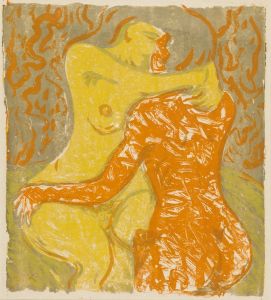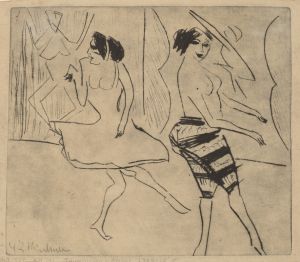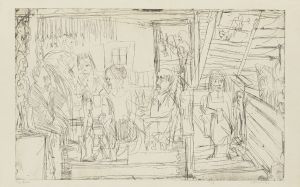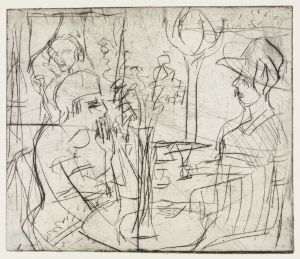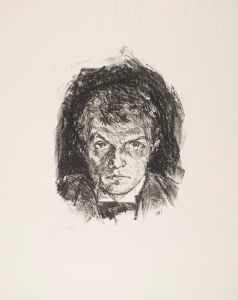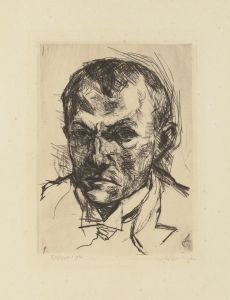
Self-Portrait in the Studio
A hand-painted replica of Ernst Ludwig Kirchner’s masterpiece Self-Portrait in the Studio, meticulously crafted by professional artists to capture the true essence of the original. Each piece is created with museum-quality canvas and rare mineral pigments, carefully painted by experienced artists with delicate brushstrokes and rich, layered colors to perfectly recreate the texture of the original artwork. Unlike machine-printed reproductions, this hand-painted version brings the painting to life, infused with the artist’s emotions and skill in every stroke. Whether for personal collection or home decoration, it instantly elevates the artistic atmosphere of any space.
"Self-Portrait in the Studio" is a notable painting by the German expressionist artist Ernst Ludwig Kirchner, created in 1910. Kirchner was a founding member of the influential art group Die Brücke (The Bridge), which played a crucial role in the development of Expressionism in the early 20th century. This painting is an exemplary piece that reflects Kirchner's distinctive style and the broader themes of the Expressionist movement.
The painting depicts Kirchner himself in his studio, a common subject for artists exploring their identity and role in the creative process. In "Self-Portrait in the Studio," Kirchner presents himself in a dynamic and somewhat distorted manner, characteristic of his approach to form and color. The use of bold, non-naturalistic colors and expressive brushwork is evident, capturing the emotional intensity and psychological depth that are hallmarks of Expressionism.
Kirchner's self-portrayal is not just a literal representation but an exploration of his inner world and artistic identity. The studio setting is significant, as it was not only a place of work but also a space of personal reflection and experimentation for Kirchner. The painting's composition and the artist's gaze invite viewers to consider the intimate relationship between the artist and his environment.
The period during which Kirchner created this painting was marked by a sense of upheaval and change, both in the art world and in society at large. The early 20th century was a time of rapid industrialization and urbanization, which influenced the themes and techniques of many artists, including Kirchner. His work often reflects a tension between the modern world and a desire to return to more primitive, raw forms of expression.
"Self-Portrait in the Studio" is also significant for its reflection of Kirchner's personal struggles and ambitions. Throughout his career, Kirchner grappled with issues of identity, mental health, and the pressures of the art market. These personal challenges are often mirrored in the intensity and emotional depth of his work.
The painting is housed in the collection of the Städel Museum in Frankfurt, Germany, where it continues to be an important piece for understanding Kirchner's oeuvre and the broader context of German Expressionism. The museum's collection includes several other works by Kirchner, providing a comprehensive view of his artistic development and the evolution of his style.
Kirchner's influence extends beyond his own work, as he played a pivotal role in shaping the direction of modern art in the early 20th century. His contributions to the Expressionist movement helped pave the way for future generations of artists who sought to explore the emotional and psychological dimensions of art.
In summary, "Self-Portrait in the Studio" by Ernst Ludwig Kirchner is a significant work that encapsulates the essence of Expressionism through its bold use of color, dynamic composition, and introspective subject matter. It offers insight into Kirchner's artistic vision and the cultural context of his time, making it a valuable piece for both art historians and enthusiasts.





